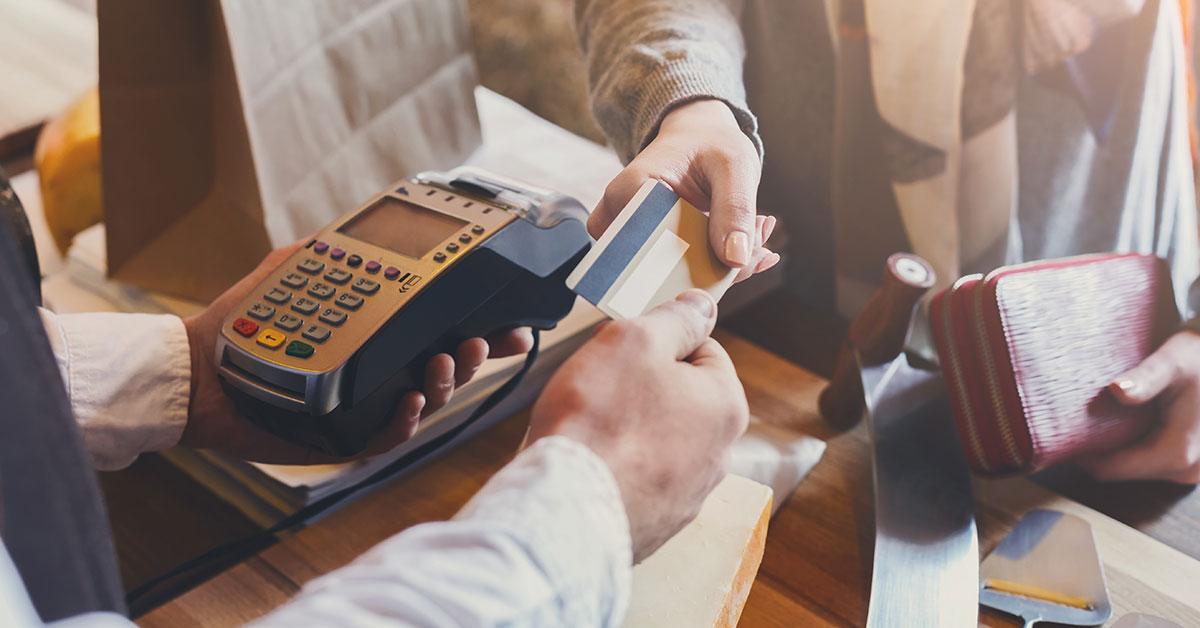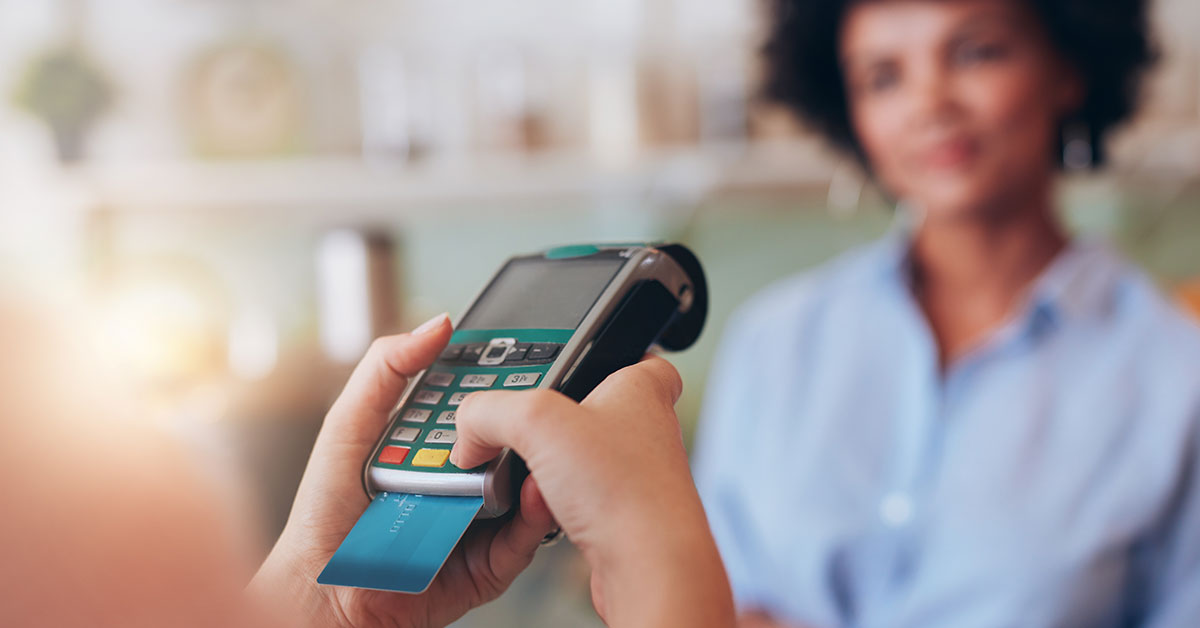
How to Choose Your First Credit Card
So, you’re ready to get your first credit card? It’s a big deal, and it can be intimidating. You might have even started receiving credit card offers in the mail, and you’re lost as to which one to choose. The reality is, not all credit cards are created equal, and it takes some preparation and research to make sure you choose the right one. Here are some tips to help you with that choice.
Credit Card Basics
Before we get started, if you’re looking for your first credit card, chances are, there are going to be some terms that might be unfamiliar to you. When doing research, you’ll come across these words often. By getting familiar with them now, you’ll be in a better position to make an informed decision.
And as a reminder, or in case you’re not sure, here’s how credit cards work. A credit card allows you to borrow money for purchases. Unlike paying cash or using a debit card, credit cards allow you to pay upfront for a purchase and then pay the balance back at a later date. Typically, if you don’t pay back the full amount you borrowed by the first month, you’ll have to start paying interest. Some credit cards give you a longer interest-free period to pay back your balances, but it’s always temporary and any balance you don’t pay back during that promotional period will start earning interest.
- Credit Limits – This is the maximum amount you can borrow. So, if your credit limit is $1,000, you can only pay for up to $1,000 worth of purchases at any given time. This is also sometimes called a line of credit, for example, a $1,000 line of credit.
- Minimum Payment – This is the minimum amount you’ll owe each month you use your credit card, which will usually not cover the full amount of your purchases. For example, if you used your credit card for $300 over the last month, your minimum payment might only be $30. But, unless you are in an interest-free period, you’ll start owing interest on the additional $270.
- Interest/APR – This is a percentage added on to what you owe if you do not pay your balance in full each month. For example, if you spent $300 on your credit card this month, but only paid back your minimum monthly payment of $30, you will now owe interest on your remaining balance of $270. If your interest rate is 22%, then the $270 you still owe will quickly become $329.40, and if you only pay $30 again the next month, then your total balance will continue to grow to $365.27 due to your interest. The only way to avoid paying interest on your credit card is to pay your balance in full every month.
- Rewards – Some credit cards reward you for using the card, which can come in the form of cash back, discounts, and/or points you rack up and can use toward other purchases.
- Monthly Fees – Most credit cards include monthly fees of some kind so it’s good to be mindful of what these are and to understand how they work in order to avoid them when possible. Late Fees are a perfect example. You will incur late fees when you fail to make your minimum monthly payment on time and may be charged for every billing cycle, you’re late. Balance transfer fees are also something to be aware of. This is typically a percentage-based fee that is charged when you move a balance from one credit card to another. In most cases, the larger the balance being transferred, the larger the fee. In addition, credit cards that allow you to opt-in to over-limit transactions will also carry additional fees in the event you exceed your credit limit. This is known as an over-limit fee and is most easily avoided by keeping your credit card balance below the credit limit. Returned payment fees are also something to avoid when possible. A returned payment fee is charged when your bank returns or rejects your payment due to insufficient funds. This fee can be up to $35 and may be charged for every transaction that is returned.
Types of Credit Cards for Your First Credit Card

There are many different types of credit cards with different interest rates, credit limits, interest-free periods, and rewards. But the best cards are reserved for people with great credit. Great credit means having an established credit history. In other words, you need to have credit accounts open and have paid your balances on time for a while to qualify for the best cards. So, when looking at your first credit card, your options will be limited to cards that are designed to help you build credit.
The first option is to get a lower limit credit card. Many banks and credit unions will offer students credit cards with a lower limit. Getting an initial lower limit on a credit card can help you gain confidence with managing credit, by giving you a smaller limit you can manage and not be afraid to use. These cards are designed with the needs of students in mind and can help you pay for things like books, supplies, gas, groceries, and anything else you need. These are often a great way to build credit while you’re in school as long as you pay your monthly payments on time and don’t overuse the card. Make sure to read up on your Loan Terminology when applying.
If you’re working and you do have some credit built up, you might qualify for a basic credit card. Perhaps you’ve built up some credit through an auto loan, student loan, or even as a co-signer on a parent’s credit card. In this case, you could qualify for a basic credit card with a fair rate and average limit. As long as you pay your balance back on-time and use the card wisely, these types of cards can go a long way to building your credit. You may be surprised as to what you could qualify for by checking with your bank or credit union.
First Time Credit Card Tips

Once you’ve chosen the right card for your situation, it’s time to sign up and use your card. Even though this is an exciting experience, and it might be tempting to celebrate, remember that a credit card is a tool. It’s important to use your credit card wisely and not build bad money habits.
- Read the Terms – Don’t forget to read the contract and make sure you understand all the fees, late payment terms, and interest rate.
- Don’t Rely on Your Card – Credit is important, and credit cards are a great way to build credit, but don’t rely on your card. Only spend what you can pay back. And try to keep your utilization below 30%. In other words, if you have $1000 credit limit, try to only use less than $300 at a time.
- Pay in Full Every Month – Any balance not paid in full each month means you’re probably going to spend more money in the long run. Keep this example in mind: If you have a $30 minimum payment and that’s all you pay each month, with a 20% APR, a $500 balance can turn into you owing over $1000 within 6 months.
At Community First, we have a variety of credit cards designed for all types of financial situations. Try our Credit Card Selection Tool to figure out which one works for you or contact us at 904.354.8537 to learn more about how we can help you build an excellent financial foundation.
More You Should Know About Credit Cards
- Credit Card Usage & Your Credit Score
- What is a Good Credit Card Utilization Ratio?
- What is a Rewards Credit Card?
- Loan Terminology to Know
- How to Get Rid of Credit Card Debt
- What is a Good APR for a Credit Card?









